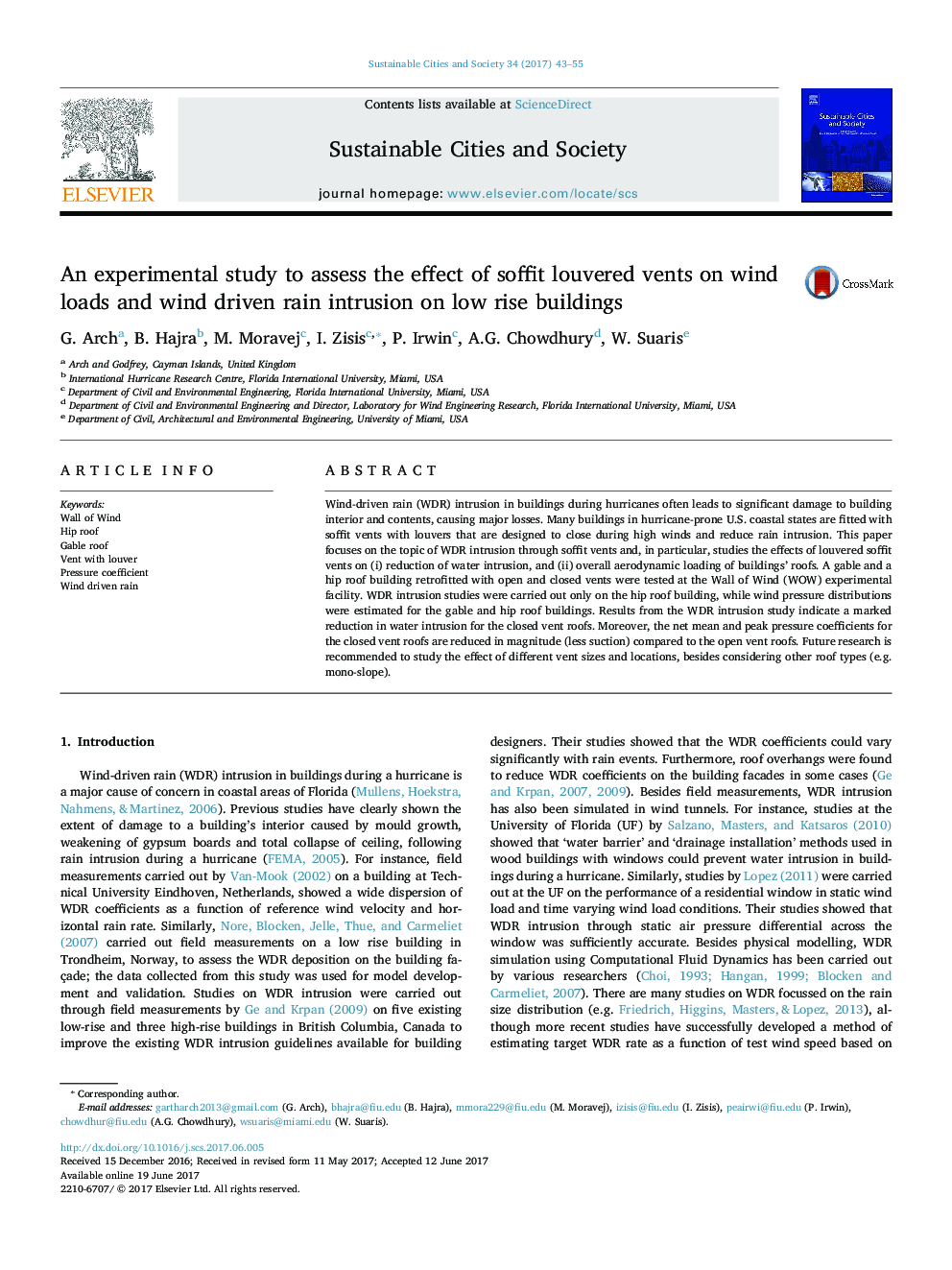| Article ID | Journal | Published Year | Pages | File Type |
|---|---|---|---|---|
| 4928171 | Sustainable Cities and Society | 2017 | 13 Pages |
Abstract
Wind-driven rain (WDR) intrusion in buildings during hurricanes often leads to significant damage to building interior and contents, causing major losses. Many buildings in hurricane-prone U.S. coastal states are fitted with soffit vents with louvers that are designed to close during high winds and reduce rain intrusion. This paper focuses on the topic of WDR intrusion through soffit vents and, in particular, studies the effects of louvered soffit vents on (i) reduction of water intrusion, and (ii) overall aerodynamic loading of buildings' roofs. A gable and a hip roof building retrofitted with open and closed vents were tested at the Wall of Wind (WOW) experimental facility. WDR intrusion studies were carried out only on the hip roof building, while wind pressure distributions were estimated for the gable and hip roof buildings. Results from the WDR intrusion study indicate a marked reduction in water intrusion for the closed vent roofs. Moreover, the net mean and peak pressure coefficients for the closed vent roofs are reduced in magnitude (less suction) compared to the open vent roofs. Future research is recommended to study the effect of different vent sizes and locations, besides considering other roof types (e.g. mono-slope).
Related Topics
Physical Sciences and Engineering
Energy
Renewable Energy, Sustainability and the Environment
Authors
G. Arch, B. Hajra, M. Moravej, I. Zisis, P. Irwin, A.G. Chowdhury, W. Suaris,
